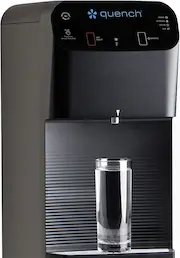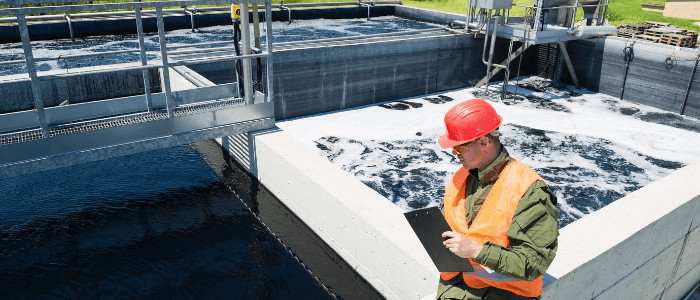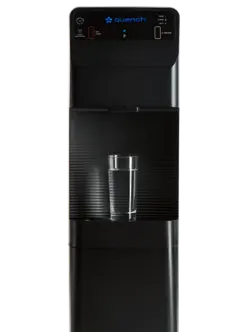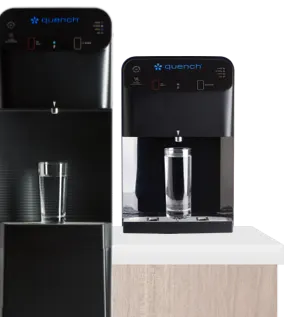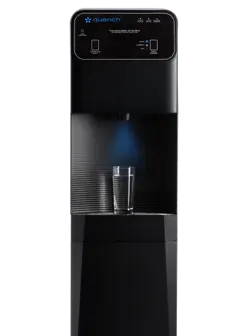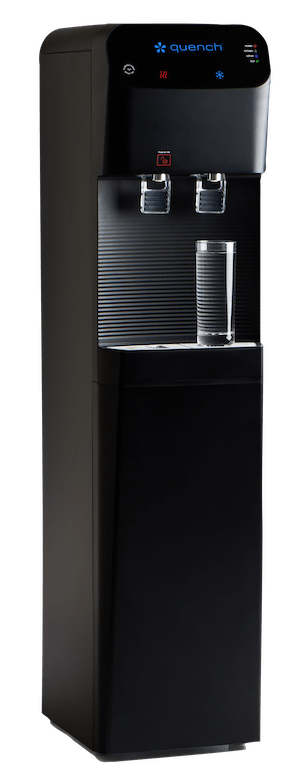Why does your local water quality matter if you’re planning on filtering it anyway? In the United States, the Environmental Protection Agency (EPA) sets and enforces health standards to remove contaminants in public drinking water. Those water quality standards help ensure clean water is at your disposal. But unfortunately, accidents happen, and water pollutants from both natural and human activities can often slip through cracks, crevices, and porous spaces of water pipes, aquifers, water catchments, and storage reservoirs. Overall, aging infrastructure and open reservoirs are the biggest reasons behind water quality problems after it has been filtered by a municipality or water company.
If your business has been in pursuit of drinking water options that effectively drive hydration throughout your workforce, then understanding your local water quality and reviewing your systems for water quality management will be an essential first step.
Why Should You Learn About Your Local Water Quality in the Workplace?
It’s important to understand all of the possible contaminants or sources of water pollution that can be lurking in your drinking water. Pesticides and fertilizer used in landscaping, farming, and green spaces all over the country can often run off into groundwater and affect your local water quality — as well as problems caused by a changing climate such as harmful algal blooms. Sewage can also wind up in groundwater, putting the surrounding community at risk of contracting dangerous illnesses like hepatitis and bacteria like E. coli. Other potential contaminants include arsenic, lead, fluoride, salt, nitrates, and other non-sewage-related bacteria.
With a better understanding of the water quality issues that you can run into, your organization can create a water quality management plan more effectively — to mitigate these problems moving forward. Finding ways to elevate your drinking water systems can go a long way toward promoting employee hydration, health, and happiness long term.
Local Government’s Role in Water Treatment
State and federal regulations help protect water resources, but it’s up to the local governments to prioritize water quality monitoring by filling in the gaps and implementing those regulations. Municipalities tailor their water treatment processes to the surrounding topography, climate, and infrastructure.
There are 2 main types of water treatment processes in the United States to keep in mind — surface water treatment and groundwater treatment. Surface water treatment, the most common of the 2 processes, involves collecting water from above-ground sources like local waterways or snowmelt basins. According to the Center for Disease Control and Prevention (CDC), once surface water is delivered to water treatment plants, it is sent through 4 stages of treatment to improve surface water quality:
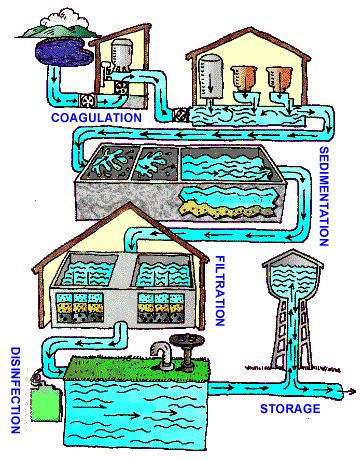
-
Stage 1 — Coagulation and Flocculation:
Positively charged chemicals are added to the water. These chemicals bind to dirt and other dissolved particles in the water to form larger particles — called floc.
-
Stage 2 — Sedimentation:
During the sedimentation phase, the floc that was formed in stage one settles at the bottom of the water supply.
-
Stage 3 — Filtration:
Once the floc has settled, the clean water will pass through filters to remove dissolved particles, such as dust, parasites, bacteria, viruses, and chemicals.
-
Stage 4 — Disinfection:
After the water has been filtered, a disinfectant like chlorine, chloramine, or ozone is added. These disinfectants kill any remaining parasites, bacteria, and viruses, and help protect the water from germs when it is piped to homes and businesses.
Some communities in the United States use groundwater, which can occur in pore spaces in some sedimentary rocks and in cracks and fissures in solid rock. Typically, surface water requires more treatment and filtration than groundwater because lakes, rivers, and streams contain more sediment and pollutants — which means they’re more likely to be contaminated than groundwater. In some parts of the world, wastewater treatment takes place to produce a clean water supply — where wastewater that flows down the drain is filtered and treated until it’s safe to drink.
EPA water treatment regulations, including those associated with the Clean Water Act, also require local municipalities in the United States to take samples of water, chemical conditions, and sediment. These processes allow researchers to pinpoint any changes in your water supply and prevent future pollution problems. Despite these preventative measures, contaminants still manage to get in your drinking water. In fact, EPA Administrator Andrew Wheeler told Newsweek that “92% of the water every day meets all the EPA requirements for safe drinking water.” The remaining 8% indicates that 209 million glasses of water per day — or 2.3 billion gallons of water per day — in the United States, are unsafe to drink.
Water Quality’s Impact on a Water Filtration System
Water quality in different areas of the country can vary from zip code to zip code — sometimes even within the same neighborhood. With these considerable fluctuations in mind, a water filtration system has become a valuable “last line of defense” for workplaces that want to make sure their water supply is clean and ultimately benefits their team members. Advanced water filtration technology helps with lead reduction and can remove harmful toxins as well.
Understanding your organization’s local quality will be a key factor in determining the water filtration system your business needs — as this varies depending on location. For instance, certain compounds, like E. coli bacteria, can be treated with UV or LED sanitation, which kills microorganisms by destroying the nucleic acid, disrupting its DNA, and preventing reproduction. Other contaminants, including sodium, chloride, copper, chromium, and lead can be removed by reverse osmosis (RO) — a water purification process that uses a semi-permeable membrane (synthetic lining) to filter out unwanted molecules and large particles.
Curious about what’s in your local water supply? Check out this Local Water Experts page to help determine how your business should upgrade its water quality management plan, as well as what unique treatment your local water might require.
The Advantages of Improving Your Water Quality Management at Work
Regulations, such as the federal Clean Water Act, and other water quality parameters, exist to provide your workplace with clean water and promote the health of your employees. However, local systems don’t always do enough to achieve these results — making a filtration system a valuable option to elevate your water supply and ensure your drinking water is serving its purpose in the workplace. The benefits your organization can expect to see as a result of upgrading your local water quality management at work with a powerful filtration system include:
- Improved hydration throughout your workforce.
- Greater levels of focus and increased brain function throughout the day.
- Higher levels of energy in your employees.
- Boosted morale across departments.
- Enhanced organizational productivity.
- A host of health benefits for your team members — from improved kidney function to better digestion.
To take advantage of these benefits, it’s necessary to work with a dependable water service provider. This ensures your business not only has access to the filtration solutions they need to offer clean water year-round but also access to qualified technicians if any problems arise along the way — that’s where Quench Water comes in.
Water Solutions Tailored to Your Local Water Supply
No 2 municipalities are alike, and neither are their water sources. That’s why Quench’s water experts analyze your local water supply and offer a customized filtered water dispenser to ensure your business’s drinking water is clean and great-tasting. Quench office water systems use advanced filtration and sanitization technologies at the point-of-use such as carbon filtration, reverse osmosis, UV, and antimicrobial surface protection — to remove sediment, reduce lead and other chemical contaminants, and get rid of off-tastes and odors.
If you want to take your water quality management planning and water purification systems to the next level, Quench offers machines with RO filtration. The Quench Q-Series filtered water dispensers produce quenchWATER+, our highest quality water filtered through our proprietary 5-filter water filtration system. Quench’s state-of-the-art RO filtration process creates the cleanest filtered drinking water — but also removes naturally occurring minerals. So, we created the FDA- and NSF-certified Mineral+ filter to add minerals and electrolytes back into the water, producing a revitalizing, refreshing, and hydrating alkaline water with a smooth mouthfeel. It turns a regular filtered water cooler into a tasty treat.
Don’t know what’s lurking in your business’ tap water? Leave that to us. Get a free quote or take this quiz to see which water filtration system is right for you.
